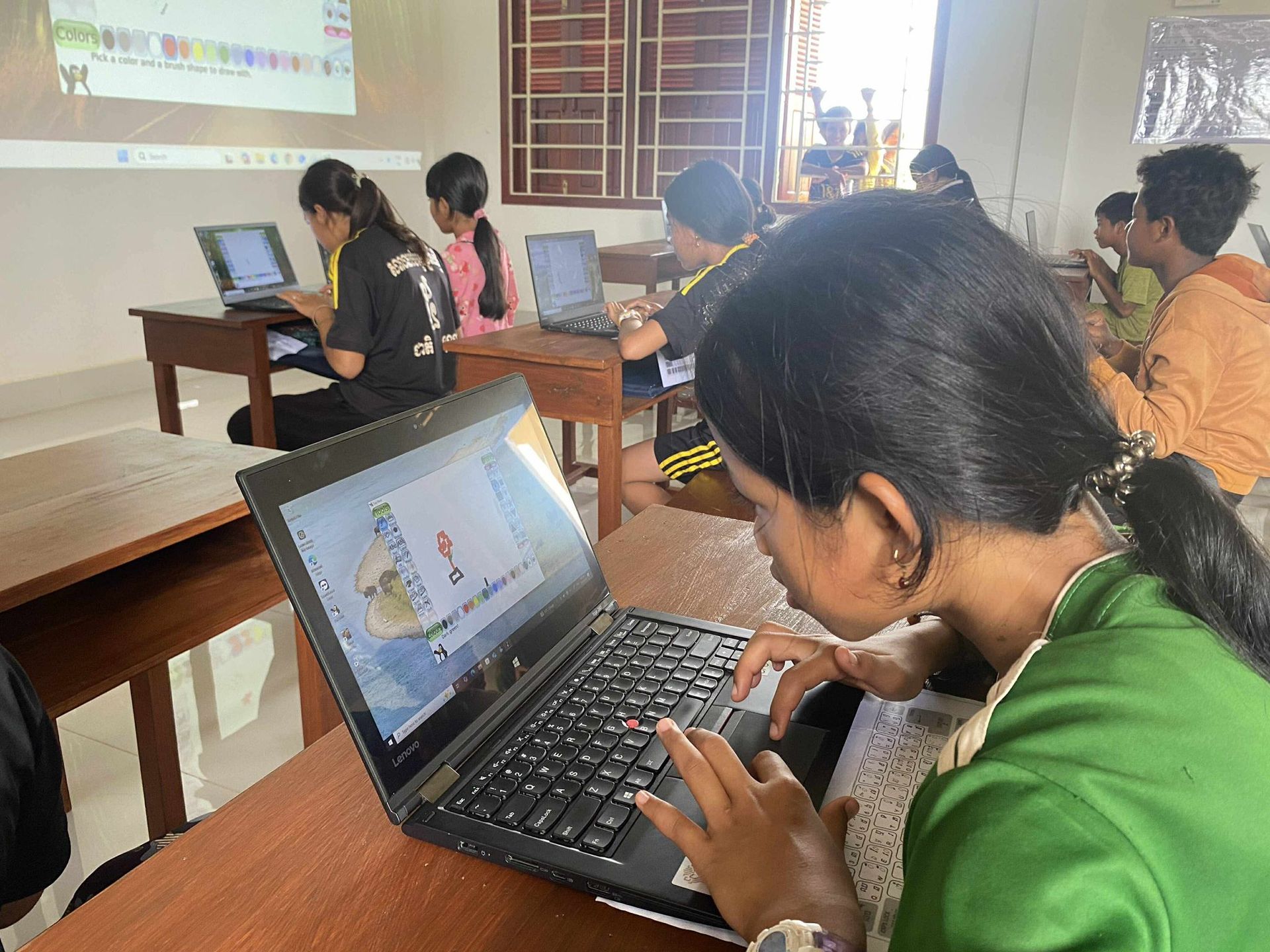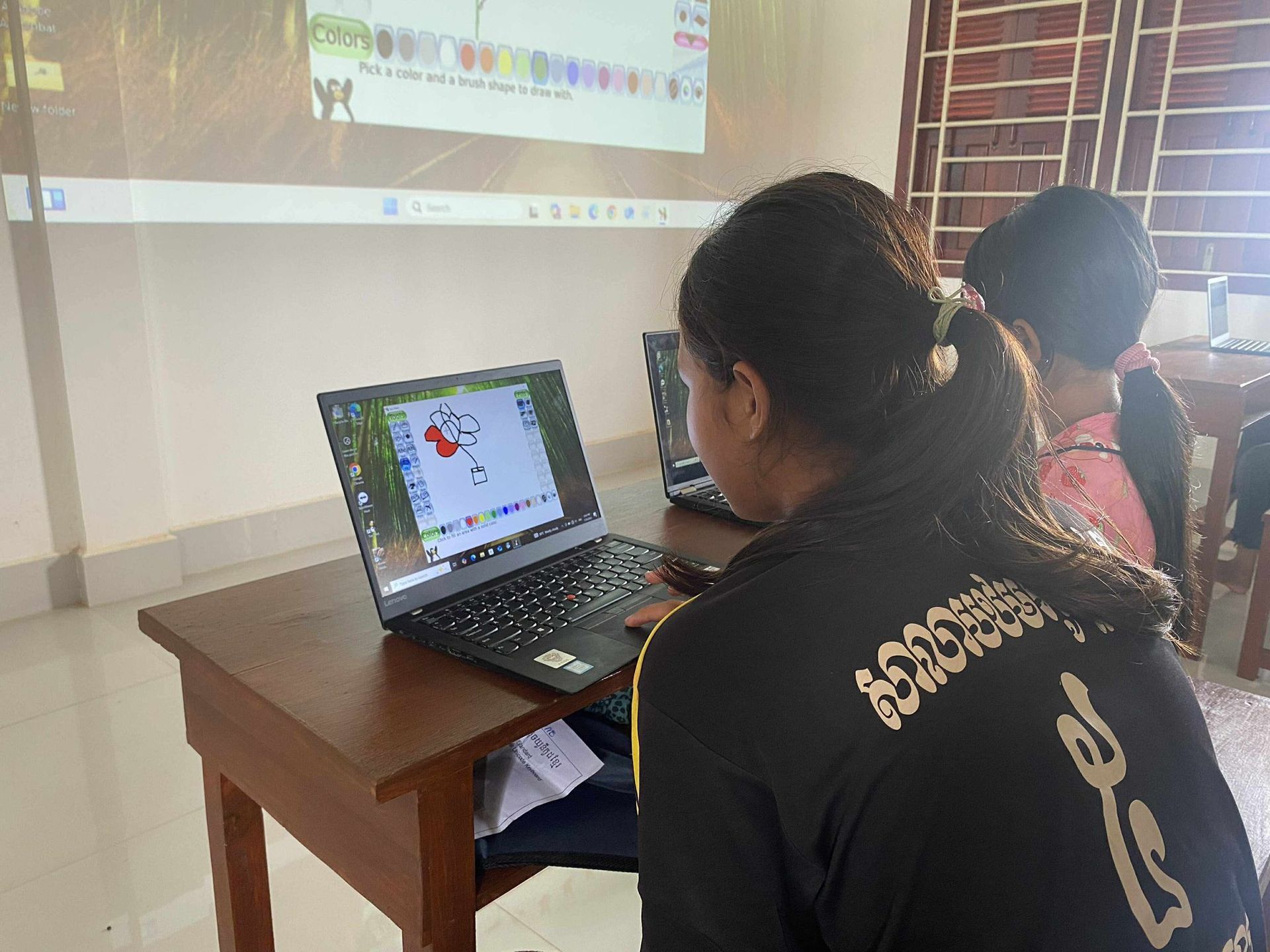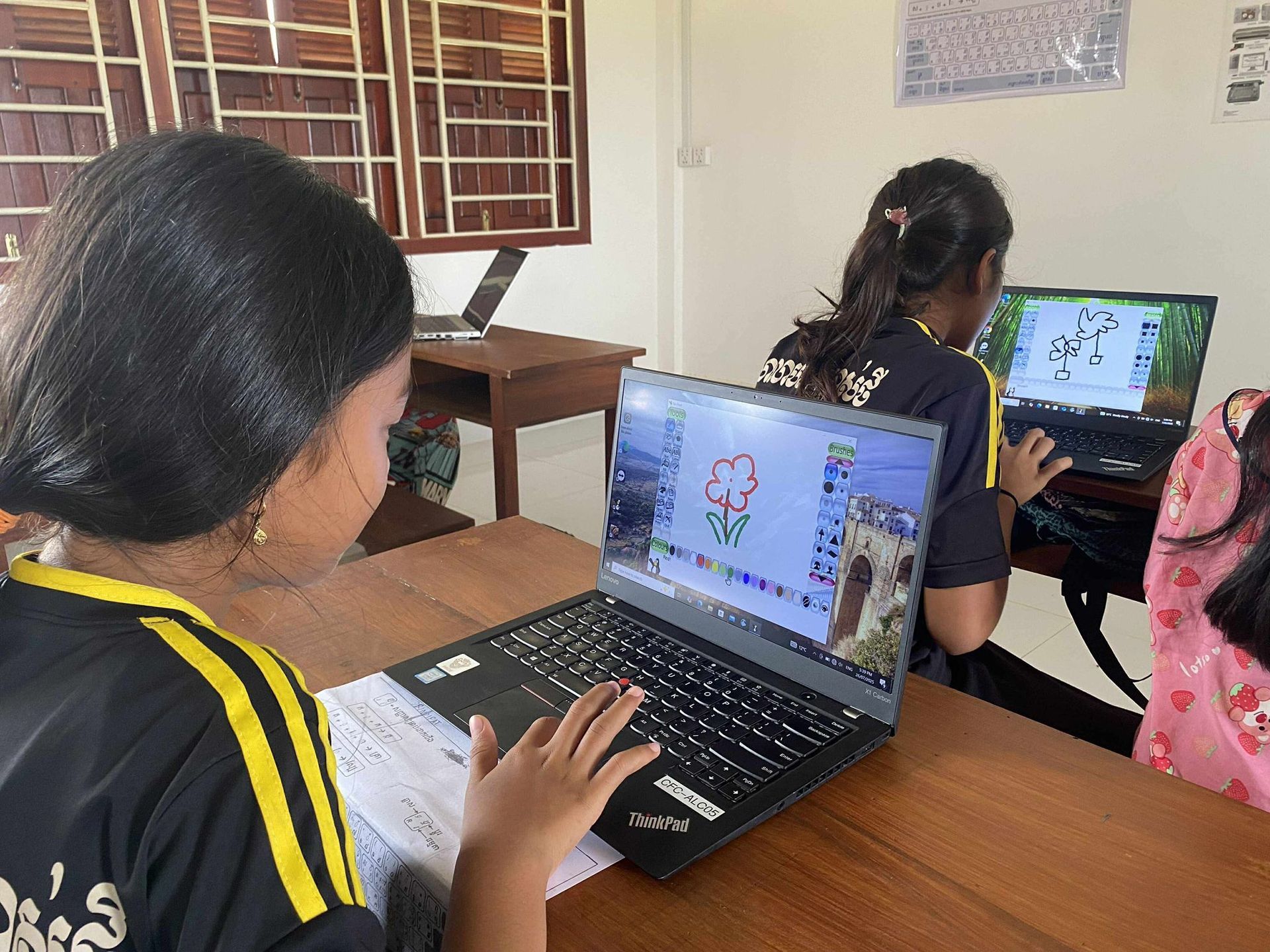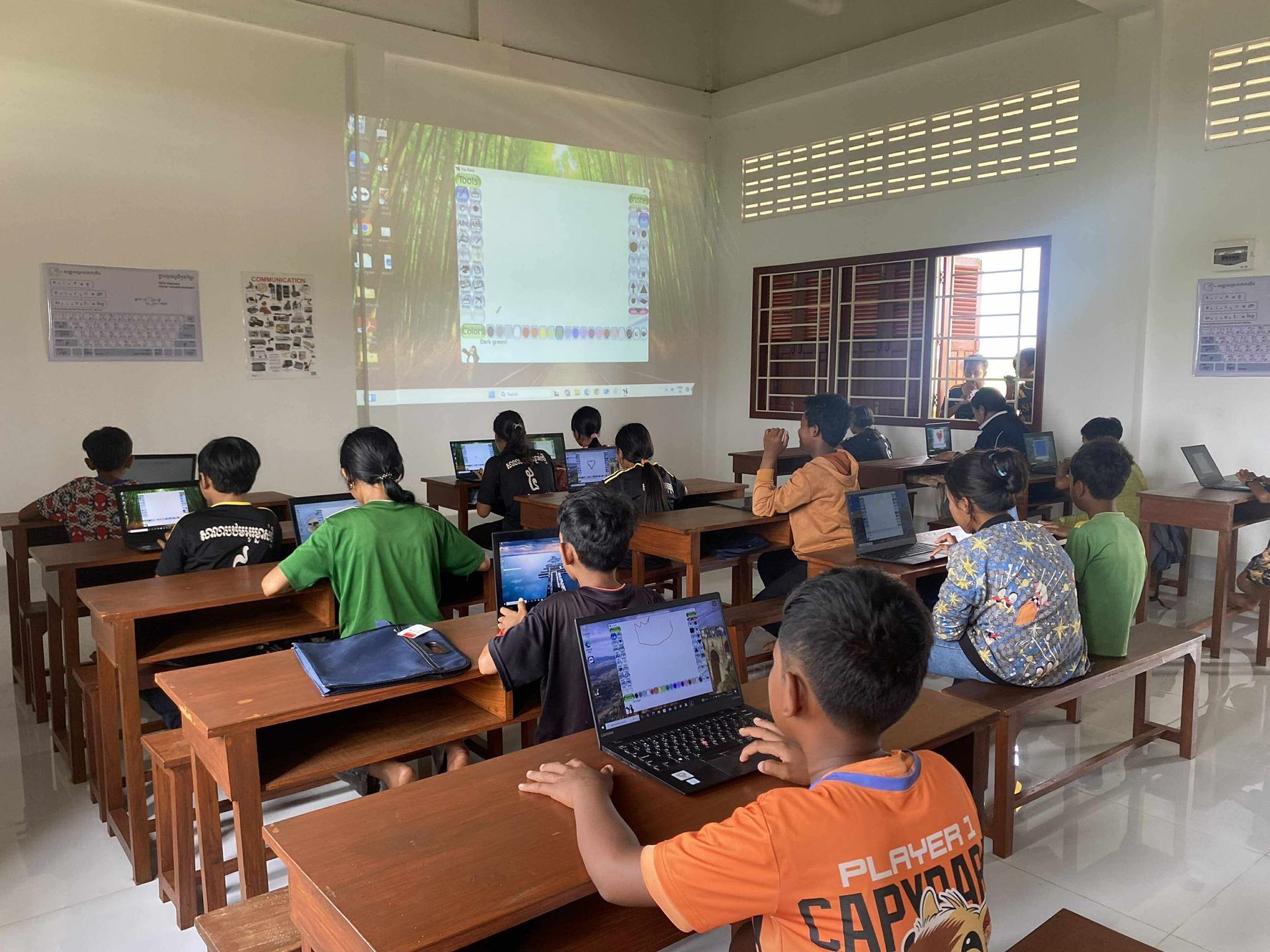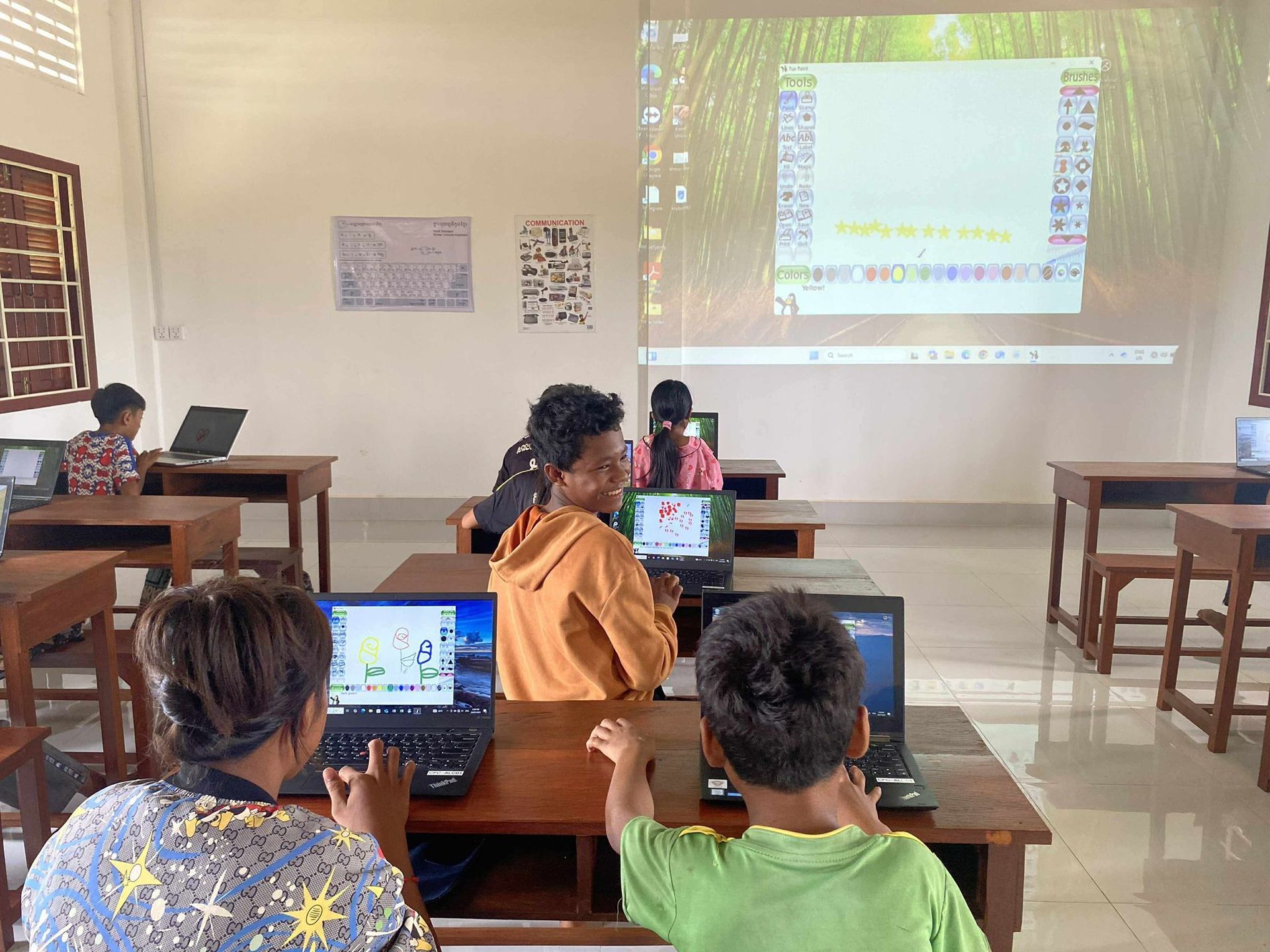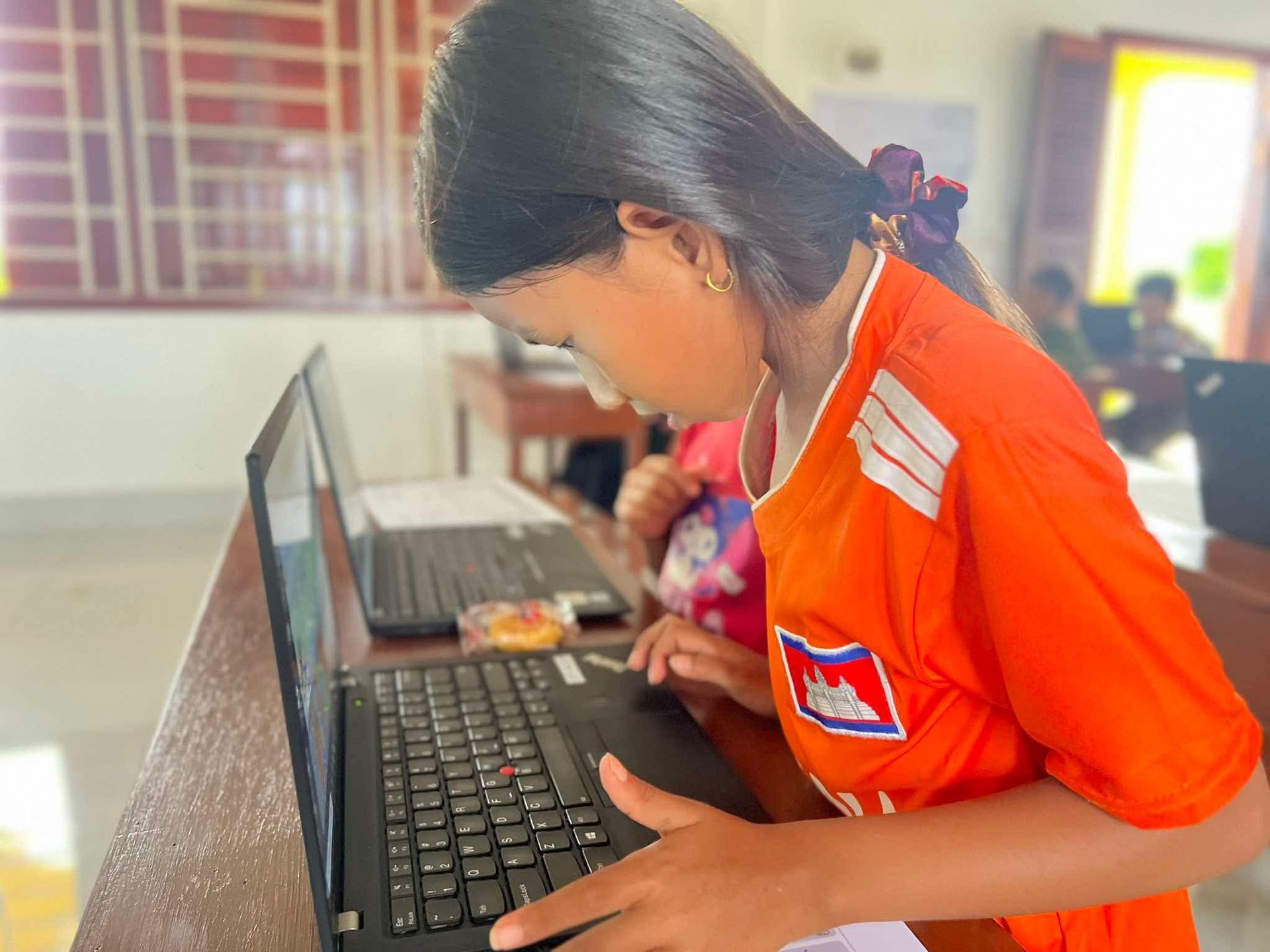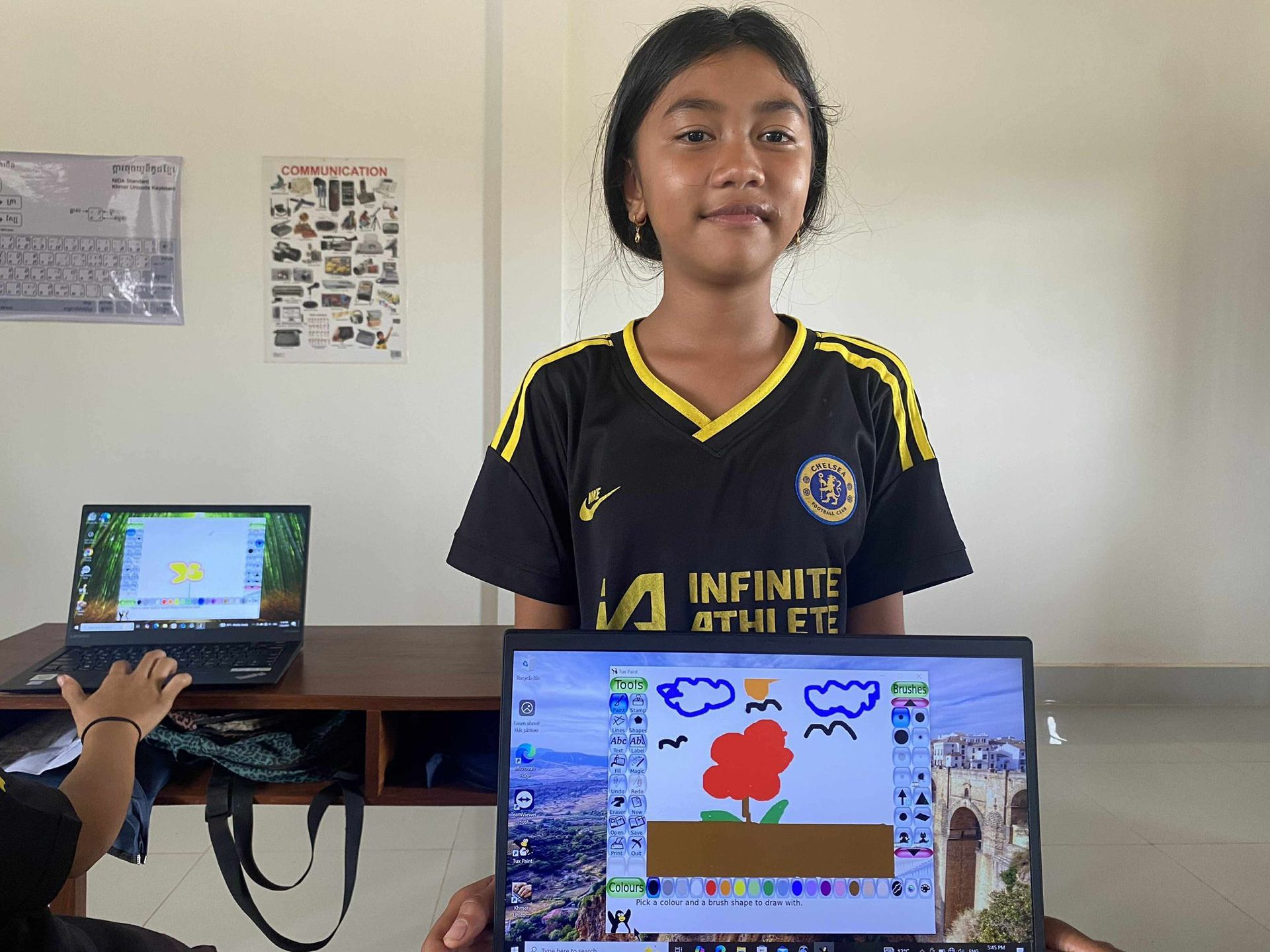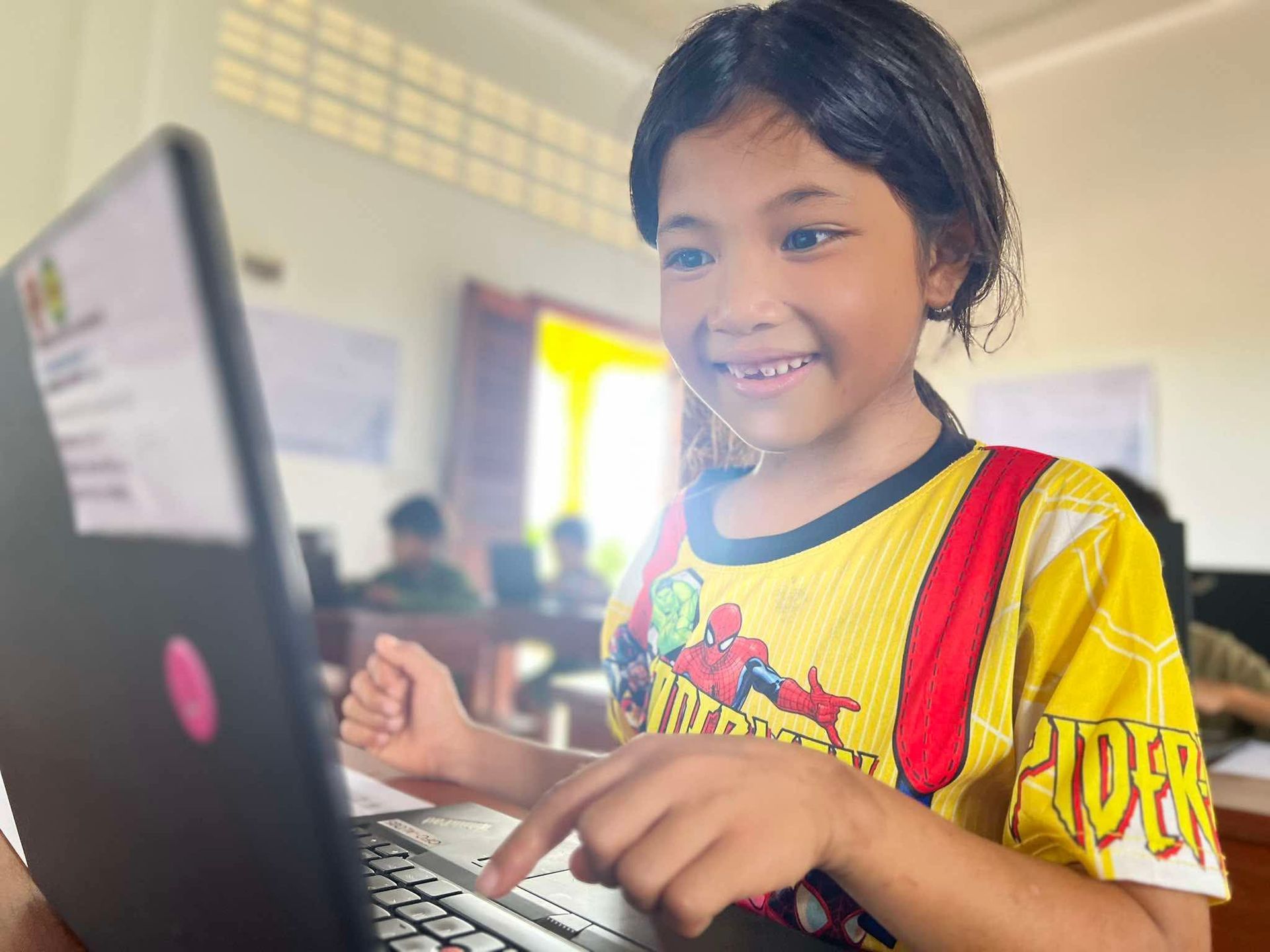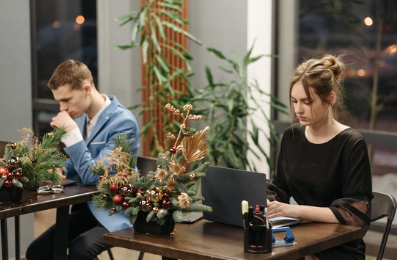Building a digital classroom in rural Cambodia
What it takes to build a classroom that works long after you leave
What started as a simple idea to collect a few unused laptops and send them to Cambodia turned into one of the most challenging, rewarding, and perspective-altering projects of my life.
And it was proof to me that humanity prevails. That when you give thoughtfully and engage with a community of people you create something that lasts.
During a previous trip to Cambodia, I saw countless needs and began asking myself; how could I help?
I saw determined students held back not by ability, but by a lack of digital tools essential for learning, opportunity, and breaking the poverty cycle. Back at home I noticed an old laptop gathering dust on my study floor, and a thought began to form. That thought sparked a movement with lasting impact.
On paper, it sounded simple: deliver laptops, set up the room, fly home. In reality… it was anything but.
At the airport laptops shipped, funds raised, thanks given, I finally exhaled over champagne. Then it hit me: What was I doing? I had no idea what the next nine days would hold.
How long could setting up a classroom take… right?
Twelve hours later in Siem Reap, my driver was nowhere in sight. A crackly call confirmed he was coming, and he and his colleague would soon become some steadfast allies.
Cambodia in July is high heat, heavy humidity, and sudden downpours which leave's you soaked. Each day began with tuk-tuk rides across the city in search of storage cupboards, power boards, laptop sleeves, cords, and textbooks.
There is no IKEA, no Bunnings, no Fantastic Furniture. No Officeworks. No Temple & Webster.
Finding a simple cupboard could mean 5 hours of driving around backstreets, peering into shopfronts, hoping something suitable appeared. Thankfully, the charity’s Accountant stepped in, finding the local suppliers we would have otherwise missed.
The school is an hour from Siem Reap; half the journey is along red-dirt roads pitted with rain damage. A spectacular drive through remote villages and beautiful fields. Cambodia’s green is unlike anything - vivid and almost alive. The school grounds were a beautiful setting. The contrast was striking: the relentless logistics in town gave way to rural calm the moment we arrived.
This is where the digital classroom began to take shape.
Setting up the space was more than lining up laptops on desks.
We worked with local carpenters to build storage. We sourced surge-protected power boards and solar panels. We established laptop troubleshooting processes, with a local tech store on the ground in Cambodia ensuring any future issues could be fixed quickly, without relying on outside volunteers.
The goal was simple: leave behind the laptops and the infrastructure and local knowledge to sustain it.
Throughout the week, I spoke with Teachers, Farm & Op’s Managers, NGO leaders, Farmers, Vets, Drivers. We visited other learning centres to share ideas, see what was working, and explore how to collaborate instead of duplicate effort.
By the end of the trip, the laptops were “delivered” and embedded into a functioning, community-run space where students could build their digital skills every day.
My learnings. There were so many, but in short: the “small stuff” is the big stuff. The one-percenters count. That local partnerships make the difference between a project that fizzles and one that flourishes. And that real impact happens when you move from “look what I did” to “look what we built together.”
The Digital Classroom isn’t mine or anyone that assisted. It belongs to the teachers and students who now have a safe, functional space to explore the digital world, and to the community leaders who keep it running.
If you’ve got an old laptop sitting in a cupboard, let’s talk. Because this story isn’t finished, it’s just the first chapter.

